
Caterpillar stock image. Image of colour, color, spots 33184489
These are some of the most common black and yellow caterpillars that you can find in the US: Monarch caterpillar (Danaus plexippus) Queen adult butterfly caterpillar (Danaus gilippus) White-marked tussock moth caterpillars 1. Monarch caterpillar (Danaus plexippus) Monarch butterfly caterpillar

Download Black Caterpillar With Yellow Spots Wallpaper
The way to identify black and yellow caterpillars is by looking at their colors, distinctive markings, six legs, prolegs (stumpy-looking legs), the presence of hairs or spines, and size. You can also identify some caterpillar species by the plant the caterpillar is feeding on. You can also measure their length for identification.

yellow+and+black+caterpillars Caterpillar (black and yellow) Black caterpillar, Fish pet
Below is a list of yellow and black caterpillars with stripe s, fuzzy, hairs, and smooth bodies: Monarch Caterpillar (Danaus plexippus) A monarch caterpillar has a distinctive yellow, white, and black stripe with long and fat bodies marked with white prolegs and two black tentacles.
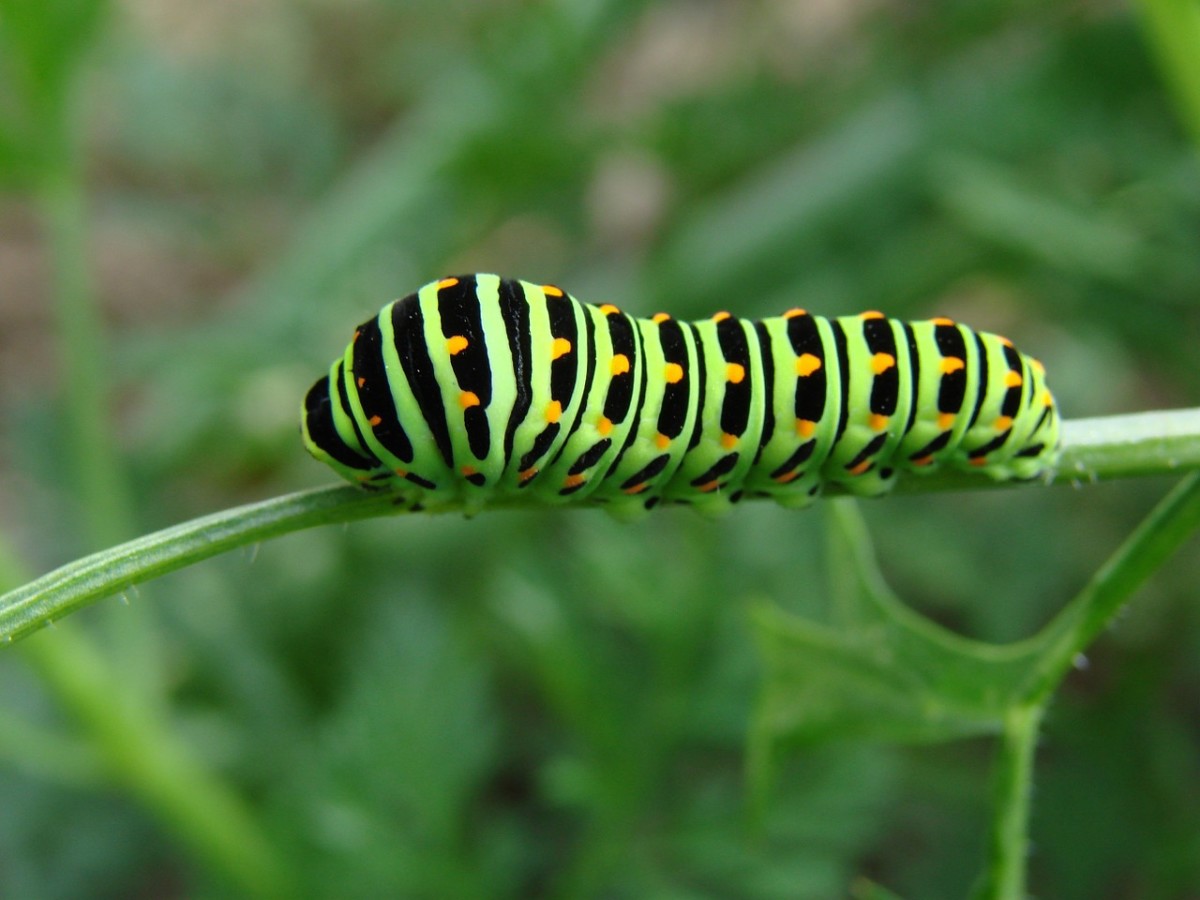
Fat Green Caterpillar With Black Spots Fat Green Caterpillar With Yellow Spots Stock Image
This caterpillar measures around 0.8 inches (2 cm) in length and is native to the United Kingdom. Upon close observation, tufts of spiky hair can be seen covering the caterpillar's pale yellow and black sections. As an adult, the six-spot burnet caterpillar transforms into a striking black moth during the day.

Black and Yellow Spotted Caterpillar. My photo gallery, Black n yellow, Steve
Description: Up to 7 cm long. Hairy, with long dark hairs on the sides of the body and shorter orange hairs on top. Young caterpillars are dark with orange bands. Oak eggar When & where: August-June. A variety of habitats including grassland, heathland, fens, and hedgerows. Often found crawling across paths in spring.

Discover 100+ about green caterpillar australia cool NEC
Pixabay.com Caterpillars in This Guide 25 of the Most Common Caterpillars in North America Banded Woolly Bear (13 fuzzy segments in a black-orange-black pattern) Tomato Hornworm (large and green, with seven white, V-shaped stripes on each side and a dark blue-black horn)
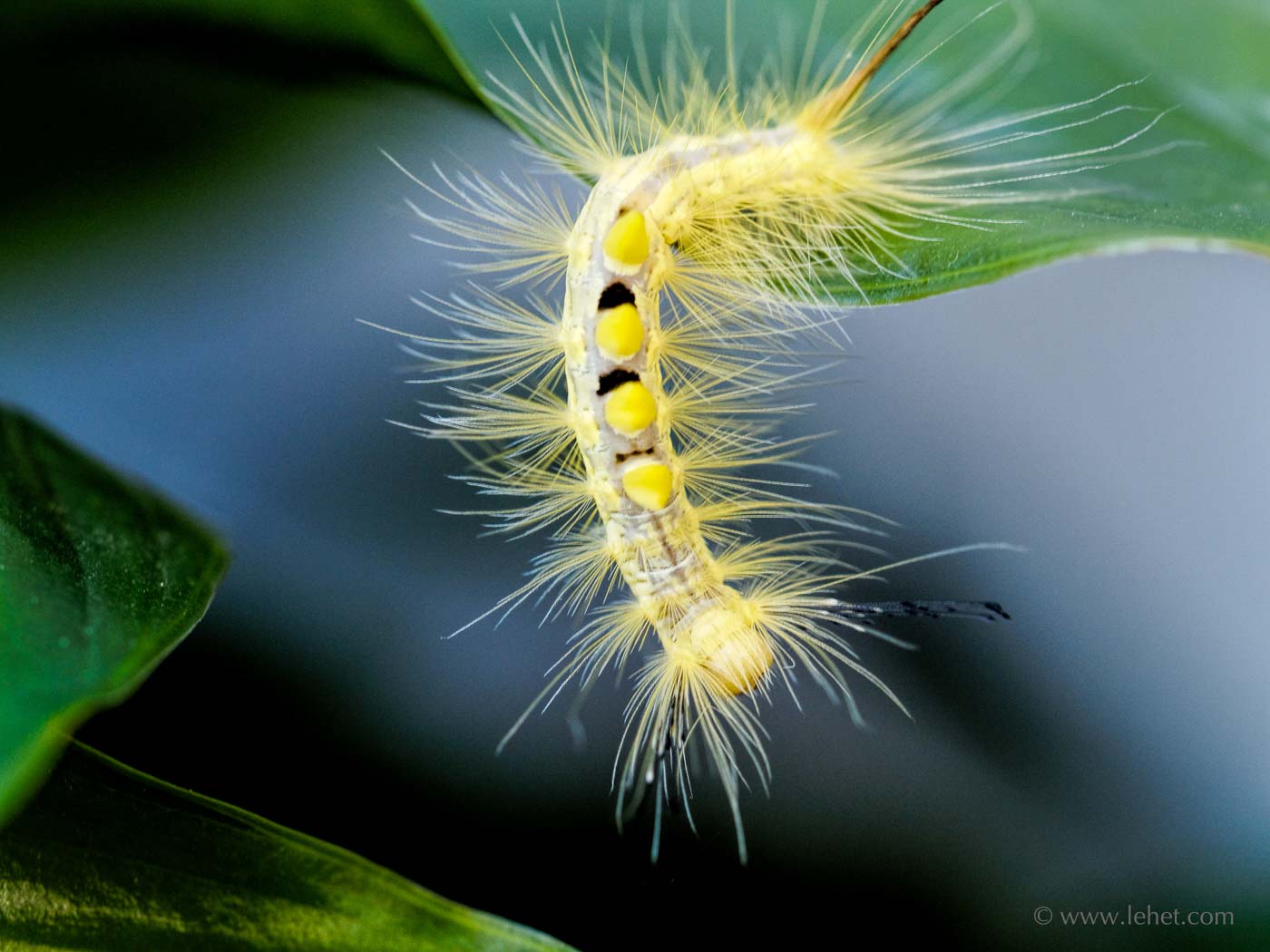
Fuzzy Yellow Caterpillar Between Leaves John Lehet Photography
The color of the spiny hairs (called setae) of certain fuzzy caterpillars gives them a yellow appearance. Other yellow caterpillars, which appear to be striped caterpillars, have yellow and black patterns. Surprisingly, yellow caterpillars have spiky or hairy characteristics that differentiate them from other species of caterpillars.

A lime green caterpillar with black stripes and yellow dots eating a plant Green caterpillar
1. American Dagger Caterpillar American Dagger Caterpillar | image by Andy Reago & Chrissy McClarren via Flickr | CC BY 2.0 Scientific Name: Acronicta americana The American dagger caterpillar is a moth larva found in North America. It's a fuzzy caterpillar covered in yellow setae with four long black bristles on its body.
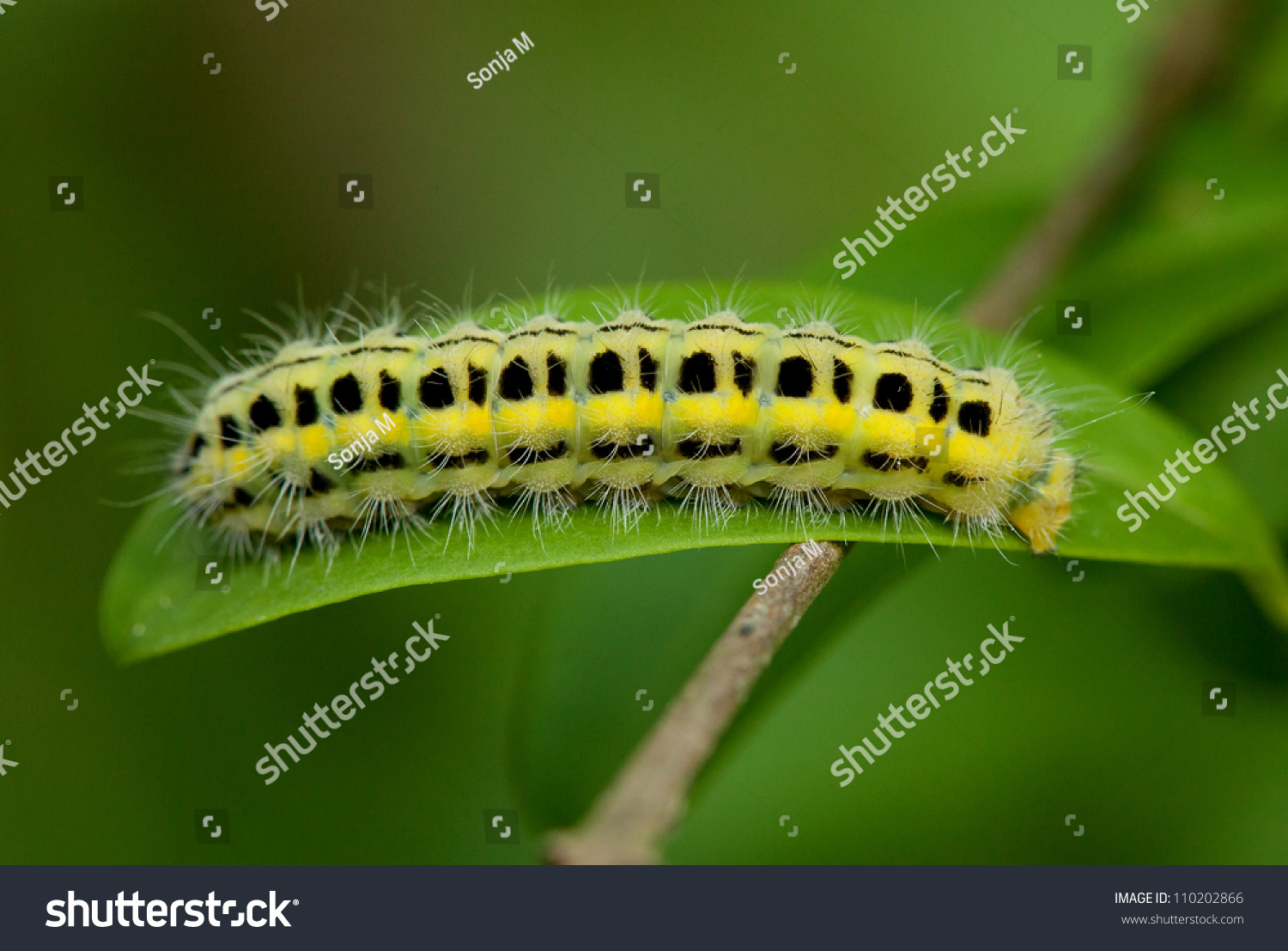
Yellow Caterpillar Black Spots Stock Photo 110202866 Shutterstock
September 5, 2022 by americangardener A caterpillar is the larval stage of a moth or butterfly. It is the second part of their four-stage life cycle: egg, larva, pupa and adult. Caterpillars are typically voracious feeders and many of them are among the most serious of agricultural pests.
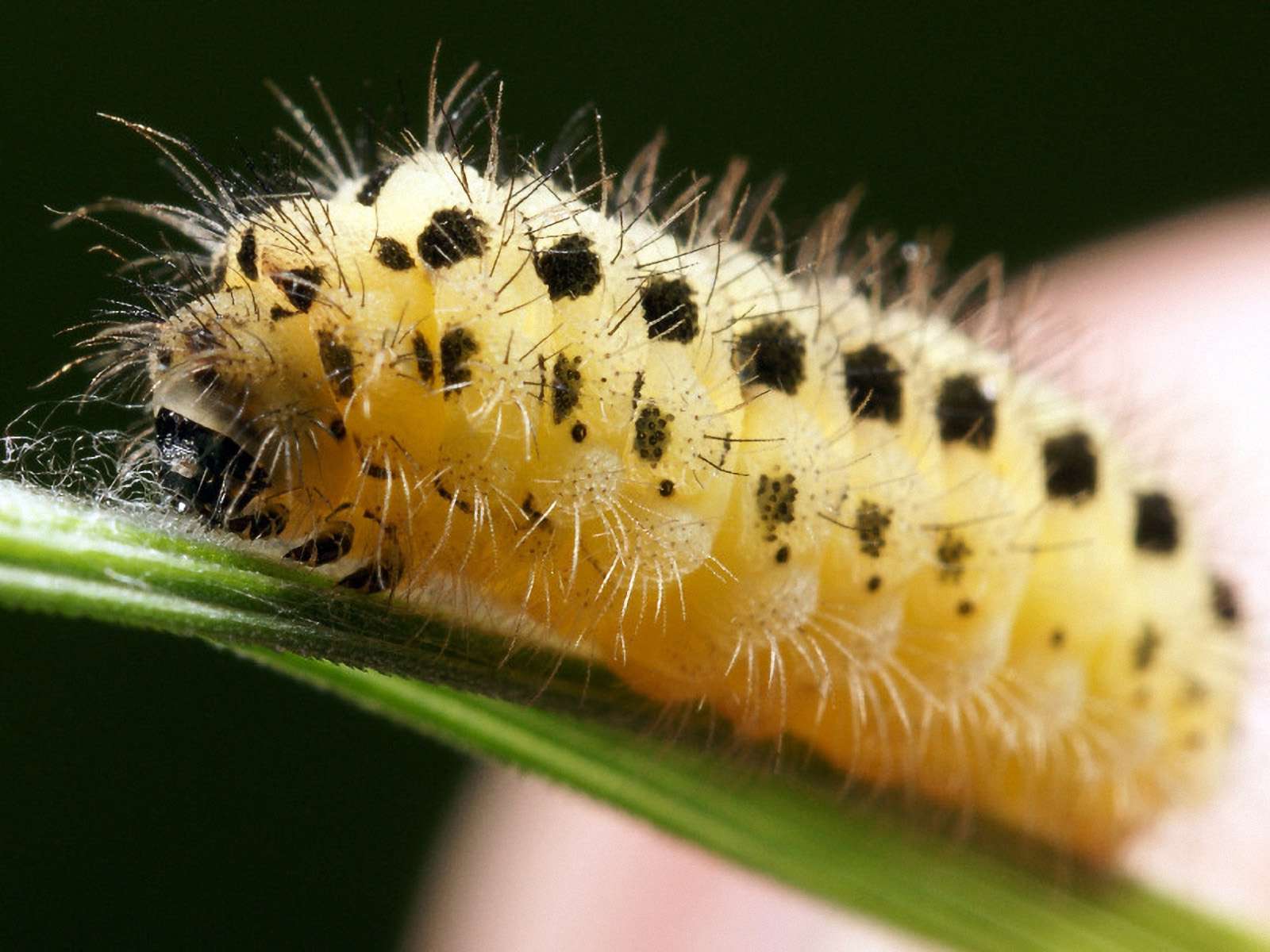
I Love Insects A Very Fat Yellow Caterpillar With Black Dots On His Body
August 18, 2022 by Harry Winston If you notice yellow caterpillars in your garden, you might think they're common and harmless - but that's not always the case. Caterpillars are often camouflaged and hard to tell apart. If any of these pests threaten your plants, find out how to identify and get rid of them below.
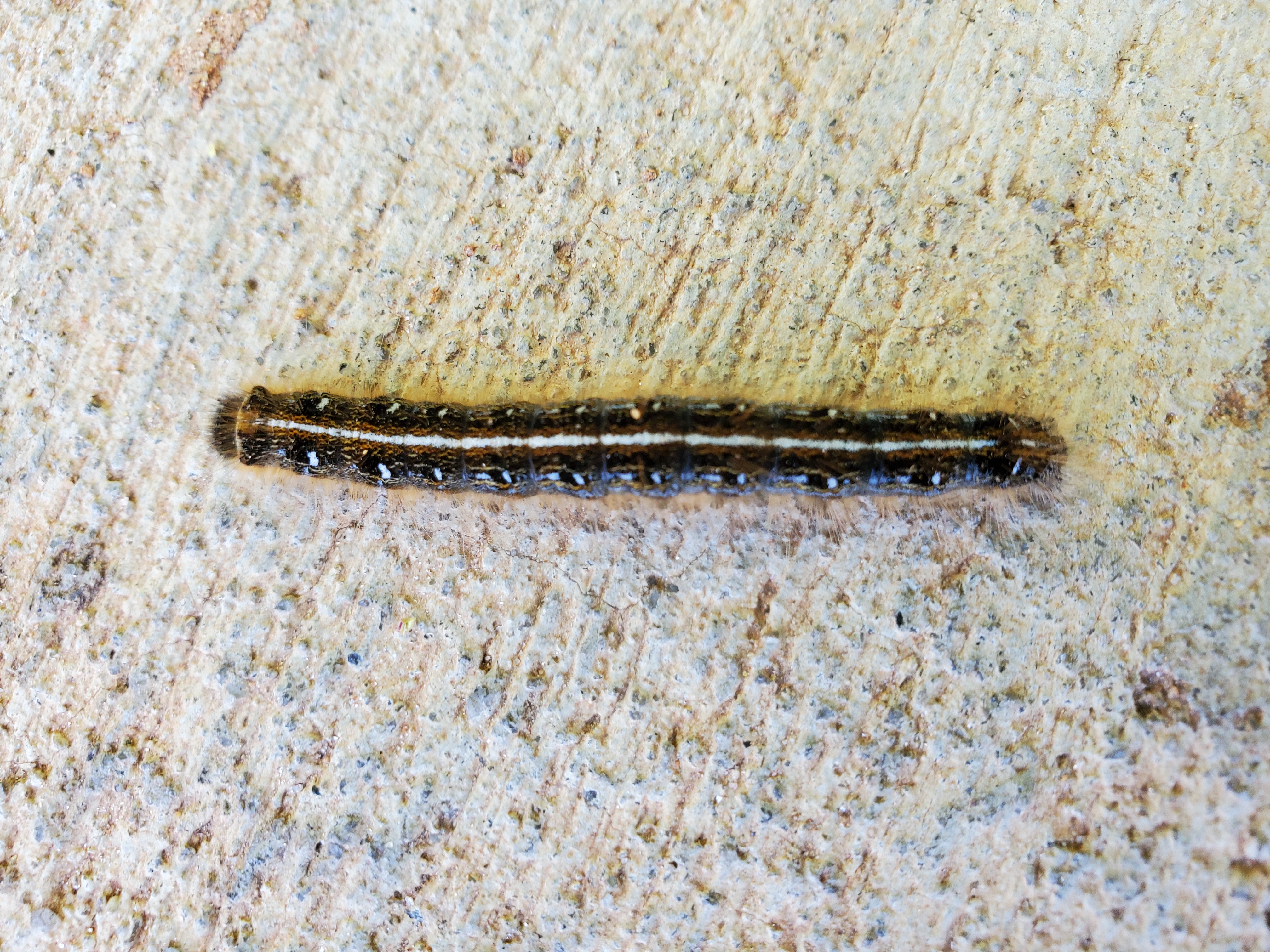
Black Caterpillars With White Racing Stripes N.C. Cooperative Extension
The Eight-spotted Forester Caterpillar, another black and yellow caterpillar found mainly in North America, is distinctive due to its yellow spots on a black base. They usually feed on grapevine and Virginia creeper plants. Distinctive features of this caterpillar include: Black body with yellow spots; Long white hairs around spots; Bright.
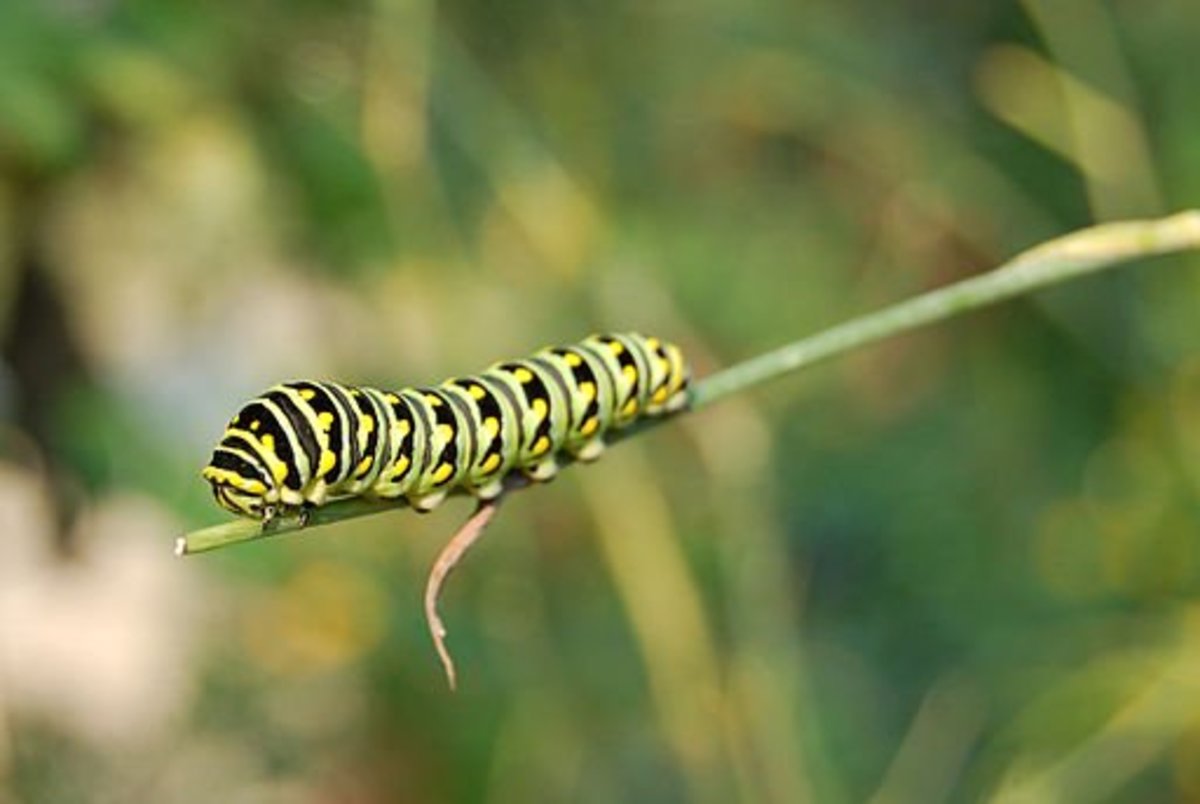
Caterpillar Identification Owlcation
Here is a list of black and yellow caterpillars for easy identification: Erasmia Pulchella Moth Caterpillar It is a sizable black caterpillar with a conspicuous yellow segment at the center. The row of bright red dots with white spiky hairs along the body is ideal for identification.
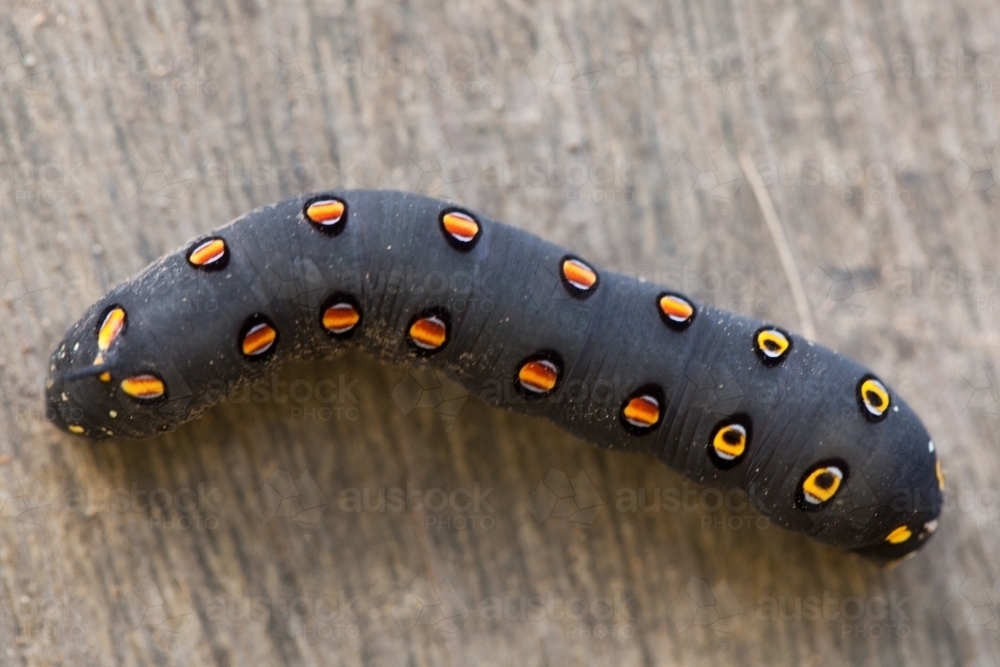
Image of Close up of a black caterpillar with orange spots Austockphoto
Here are some of the yellow species of caterpillars that are frequently found in woodland, open countryside and urban gardens and parks: Yellow Woolly Bear ( Spilosoma virginica) Buff-Tip Moth Caterpillar Sycamore Tussock Caterpillar ( Halysidota harrisii) American Dagger Caterpillar ( Acronicta americana) Sycamore Moth ( Acronicta aceris)

Beautiful Yellow Caterpillar with Black Spots Over Back Stock Photo Image of insect, black
Description & Identification Guide Unlike the red admiral butterfly caterpillar with faint yellow spots on its black body, the larva (caterpillar) of the neighbor moth caterpillar has broad and bright yellow stripes along both sides of the body, making spotting them pretty straightforward.

If you plant it, they will come! Willow House Chronicles
This caterpillar is identified by tufts of bristly yellow hairs, a shiny oval black head, and long black spines that can grow to about 2 inches (5 cm) in length. As the caterpillar matures, its fuzzy yellow color turns to pale yellow or white. The American dagger moth caterpillar doesn't sting like a wasp.

UK yellow and black what species is it? caterpillars
This cool caterpillar is always found on some species of milkweed (Asclepias species). They aren't too hard to spot, with their bright stripes of black, white, and yellow. The milkweed that monarchs feed on is protected by poisonous sap, which in turn makes the monarch caterpillar poisonous to any potential predators. Not a bad form of protection!